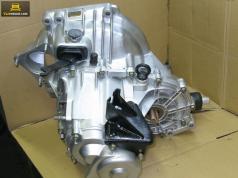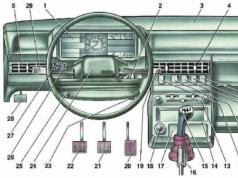Domestic cars can be repaired independently in any convenient garage. The design of them provides for the maximum level of maintainability of all nodes and mechanisms. Not exception in this case will be the repair of the head of the block, one of the operations of this process is the replacement of the guide sleeves of the valves.
In the process of operation of the valve mechanism, the valve movement occurs in a limited space. The direction for moving is given by the help of the hole in which the axis of the rod and the intake / outlet is "goes". The material for the rod is chosen as wear-resistant.
Steel doped with plenty of chromium and nickel. The guide sleeves of valves, mating with the rod, are made of less durable material, more often from copper-containing alloys. This is due to the fact that the repair kit of such sleeves will cost cheaper when maintained than the complete replacement of valves with wear stem. Also, steam steel-brass is much better working with friction pairing.
Replacement of sleeves
The gap between the opening and the valve is practically no. This and the presence of grooves on the stock helps prevent oil entering the combustion chamber. But due to the fact that the work of the valves takes place in aggressive conditions and with intensive movement, the wear of the sleeves appears, they have to be changed periodically. If they did not stand in the design, it was necessary to change the entire head blocks after working out in the holes for which the rod goes.
The need to replace bushings
Wear can be determined by several indirect signs, there are also cases when the bushings are required at mandatory:
- in the combustion chamber engine oil penetrates, due to this, its consumption increases and grayish smoke from the exhaust pipe is formed;
- a characteristic tapping is heard on the side of the block head;
- for full replacement kit valves;
- caparent Block heads.

Tool for expressing
Expressing sleeves
The most popular method of recreased is the shock. Pre-removed the head of the block we clean from contamination. Then fix it on the workbench. For the operation, you will need a special puller, brass or bronze cylindrical mandrel with a length of 80-100 mm. From one end on it there must be a flow rate of 30-40 mm with a diameter of 1-2 mm less than the diameter of the inner opening of the sleeve. The mandrel must have a maximum diameter, no more external sleeve size.
Before knocking out the sleeves, it is necessary to heat the head to about 100-120 s. This is done to attenuate the tension between the sleeves and the case. In the garage conditions, electric stove is suitable. In no case do not use the burner for this operation, so as not to overload the metal and not spoil the "geometry" of the surface of the cabinet part. Emboss must be from the side of the combustion chamber.
After the release of the seawing hole, it is necessary to measure its diameter. This is necessary in order to correctly select the tension, the difference between the size of the new sleeve and the landing diameter. The repair sleeve should be greater than 0.03-0.05 mm. This will provide a dense landing. Measurements must be carried out on the cooled head.
Pressing the repair kit
In order not to damage the surface of the holes and do not create jackets before replacing the valve guide sleeves, you need to warm up a bit of the block again. Repair kit for better landing need to cool. For this, the household freezer is suitable. Without such manipulations of high-quality pressing, you can not get, and subsequently they all quickly "break down" in their places. And it will be necessary to disassemble the node again.

Assembling mechanism
When everything is set to its locations and the head of the block will cool to the ambient temperature, it will be necessary to handle holes with a scan. Such calibration will result in the diameter in the desired size along the entire length. It is advisable to use a customizable tool, since the excessive wear occurs, and the size of the opening will be after a large number of treatments slightly less required. Due to this valves will take place with a tension, overcoming friction, and can simply jam.
Normal is considered a gap between the valve rod and a hole of 0.03-0.04 mm.
After pressing the bushings, the valve saddles can be adjusted. For this operation, shaghers or centers are used.







